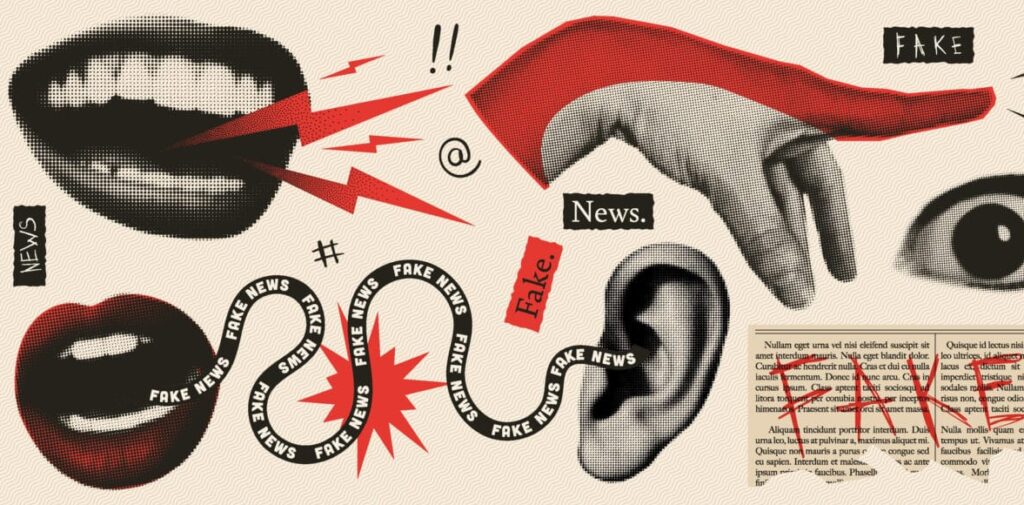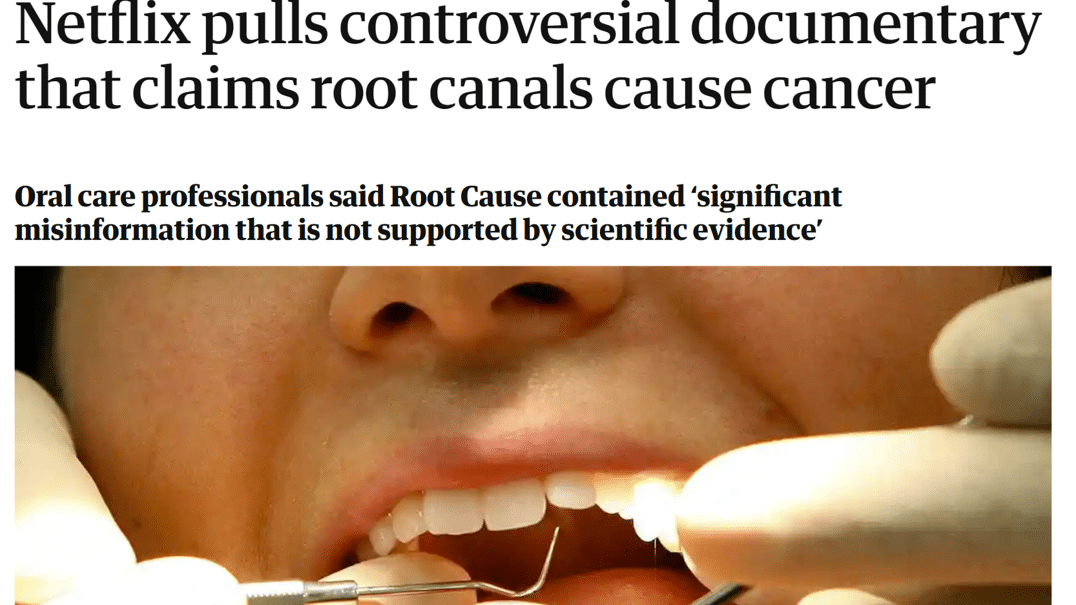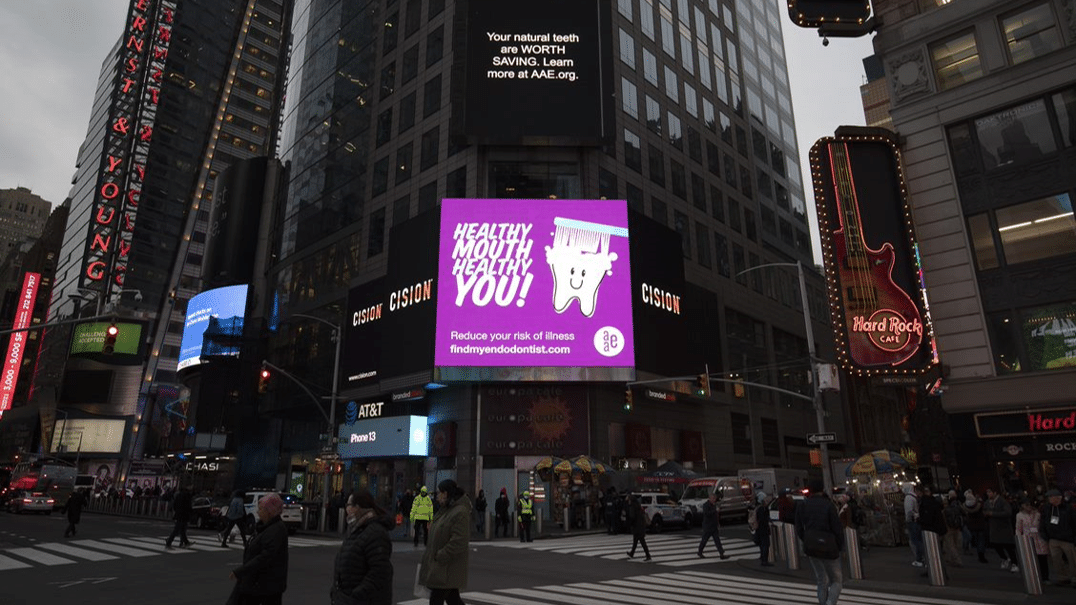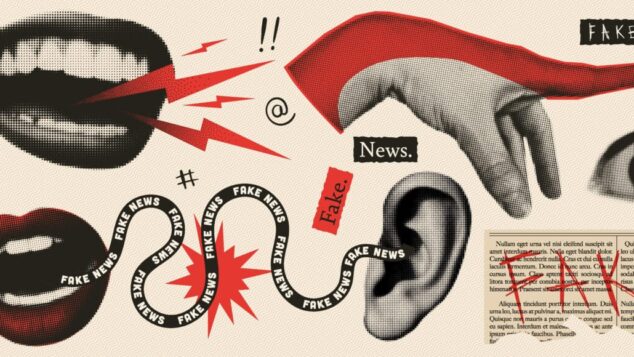Ready for Anything: How to Prepare for Misinformation Online

In November 2017, as the American Association of Endodontists’ (AAE) Marketing & Communications team was busy planning the launch of a big public relations campaign, our media monitoring picked up something strange: a movie trailer that seemed to be talking an awful lot about root canal treatment.
The AAE is the association representing root canal specialists known as endodontists. The AAE’s Marketing & Communications team has the not-so-small task of informing the public about the benefits of root canal treatment – a procedure that often has the misfortune of being painted in a negative light.
There we were, viewing a bizarre movie trailer that brought to light a long-debunked theory that root canal treatments can cause illnesses elsewhere in the body.
Called “Root Cause,” it was an Australian-produced movie that told the story of a young man who was punched in the mouth, received a non-surgical root canal treatment and subsequently developed chronic fatigue syndrome that worsened until it was debilitating. After trying various therapies, both conventional and alternative, the symptoms resolved after removal of the tooth. The movie is presented as a documentary that calls in “experts” who link cancer, cardiac disease and many chronic diseases such as MS, fibromyalgia and arthritis to root canal treatment. This is not what one who’s going in for a root canal treatment wants to hear.
Now what? Our team members were new to their roles. We needed to understand the claims of the movie, understand the science and assess the threat.
We learned that the film centered around a myth that cycled through the internet and social media: Known as “focal infection theory,” it stemmed from long-debunked and poorly designed research conducted nearly a century ago, long before modern medicine understood the actual causes of many diseases.
Therein we learned Lesson One: There is never a good time for a crisis.
Although there was reluctance within our seasoned members and leadership to confront this myth, we realized that silence was not an option.
Lesson Two: Monitor online conversations and media. Our monitoring had picked up a benign social media post of the movie producers at the trailer showing, using the keyword “root canal.” It was a small crowd, unremarkable, with a small following. It could have easily flown under the radar.
The decision to create a plan was influenced by several key factors: a focus group’s reaction showed that people, especially those with cancer-affected loved ones, were susceptible to the misinformation about root canals presented in the trailer, despite its lack of credibility. The misinformation’s semblance of being based on research, regardless of its poor quality, along with its promotion by medical professionals (including one with a revoked license), lent it undue credibility. Additionally, a cost-benefit analysis indicated that the potential risks of inaction were too significant, highlighting the need for prepared, complex messaging to counter the misinformation effectively.
Lesson Three: Don’t be surprised if there isn’t interest in planning for potential crisis. We kept hearing that there was little we could do about it. It was the internet, etc. Still, we pressed on, as ultimately our board and executive leadership entrusted us to make the right move.
Thus, we set out to make a plan.
Breaking Down our Plan
The initial step in creating our crisis communications plan involved performing a vulnerability assessment to strengthen organizational resilience and prepare for potential crises. With six vulnerabilities per potential threat, this hexagon-shaped graphic also featured a proposed “action/response” per vulnerability. For example, one of our identified vulnerabilities was the perception of self-interest in recommending root canal treatments due to their predominance in endodontists’ work. The planned action/response emphasized the benefits and importance of root canal treatments in retaining natural teeth, supported by the strong track record and scientific evidence against the focal infection theory, highlighting endodontists’ expertise in saving teeth.
After completing our vulnerability assessment and throughout the year 2018, the following preparatory actions were taken:
- Reviewed existing materials on root canal safety.
- Conducted an audit of social media conversations related to the movie trailer on Twitter and Facebook, focusing on coverage quantity, overall sentiment, and identifying key social influencers.
- Undertook digital research to profile the social presence, reach, and backgrounds of individuals featured in the movie, noting that many were considered outliers in the dental and medical communities.
- Developed a comprehensive strategy document outlining objectives, key strategies, target audiences, vulnerability assessment, planned tactics (including engaging credible third parties and utilizing earned media and paid search), and a detailed timeline for implementation.
- Identified our key spokesperson and readied key message points and a statement to deploy to media on a reactive basis if needed.
Then in January of 2019, just after we launched our highly anticipated new PR campaign, our media monitoring picked up the launch of the movie … on Netflix, no less. We learned the movie was also on Amazon Prime, Apple, and Vimeo.
Thankfully, we were prepared for this worst-case scenario, after those long months of devising our plan.
As mentioned above, our strategy included leveraging credible third parties to lend authority and avoid self-promotion. Allies such as the American Dental Association and the International Association of Dental Research were identified as potential collaborators. At the core of our response plan were letters to Netflix and the other streaming services. Various organizations, such as smaller dental societies, expressed interest in assisting in the effort in those early days following the film’s release, leading to the provision of talking points and the expansion of the campaign to include a slew of entities further applying pressure on Netflix.
Now, let’s recap our activities as the movie was being released (January 2019):
Organizational Objective Declaration:
This comprised the first sentence of our strategy document. “Guard against movie conversation measurably affecting the likelihood of people to consider root canal treatment to save their natural teeth.”
Communications Objectives:
- Promote the safety and efficacy of root canal treatments.
- Protect the reputation of endodontists.
- Position the AAE as an authority on focal infection theory.
- Maintain public neutrality towards root canal treatments based on safety.
- Inform members about AAE’s advocacy efforts.
Tactics at a Glance:
- Partnered with the American Dental Association and others to address the issue with Netflix, Amazon Prime, and other platforms hosting the movie, via letters to the companies’ executives. The letters included the message points we had developed in the pre-crisis stage.
- Filed a complaint with the Federal Trade Commission Consumer Protection.
- Conducted a focus group study on the full movie to assess its influence and identify key message points.
- Increased online advertising for Root Canal Safety assets (videos, Google AdWords, social media).
- Launched our members-only webpage for up-to-date information and actions members could take.
- Released member talking points to counter Root Cause misinformation.
- Developed a Root Canal Safety toolkit for members to help amplify AAE’s efforts.
- Identified expert members and considered engaging third parties to debunk the focal infection theory and address the science behind root canals.
- Kept our statement on hand to provide to media on a reactive basis.
Forty-five days after the movie’s debut, Netflix removed it from its streaming service. The following image was pulled from a real article from the Guardian, which referenced our statement and our efforts.
Later, Amazon Prime and others removed the movie.
Of course, we can’t know for sure why they chose to remove it, but we are confident we were a factor with our letters from allies and us.
To Take Credit or Not to Take Credit
Upon the removal of the controversial movie from streaming platforms, the decision was made to inform members about the removal without directly claiming credit, allowing members to interpret the cause. This approach proved wise, as movie advocates tried to attract attention with sensational headlines. Subsequently, the AAE revitalized our “Worth Saving” campaign, adding a focus on proactive messaging about the safety of root canals and their positive impact on overall health, countering the misinformation presented by the movie and encouraging open discussion on the topic.
What We Learned Not in the Plan
- Adhere to the crisis plan but allow for it to be iterative; revisit it annually.
- Ensure members direct all media inquiries to the communications team for better control during crises.
- Track and measure all interactions, including member phone calls, to identify trends and inform targeted responses.
- Activate staff for member relations, arming them with talking points and soliciting their feedback.
- Empower members to act as your organization’s ambassadors with the right content, avoiding direct confrontations on social media.
Every so often, misinformation bubbles up for us, but having a plan in place equips us with tools we can activate in the event of a full-blown misinformation crisis.
In case you were wondering, since its launch, our Worth Saving campaign has yielded millions of impressions, an upward trend of online patient search tool users and, data suggests, ultimately more patients in our members’ chairs.
Five years on, our online landscape is now joined by the likes of TikTok, AI, and a slew of new potential venues for misinformation, rendering it more critical than ever to have a crisis plan in place. With a little forethought, insight and planning – you, too, can be ready for anything!
Tags
Related Articles
Content governance: Setting up your content for success
Why and how to create smart, sustainable systems and processes for all the content your...
Ready for Anything: How to Prepare for Misinformation Online
This is the story of how an 8,000-member association faced down misinformation – and won.
You’ve Been Running GA4, What Now?
The Google Analytics 4 (GA4) conversion deadline last summer brought chaos to our marketing team…





